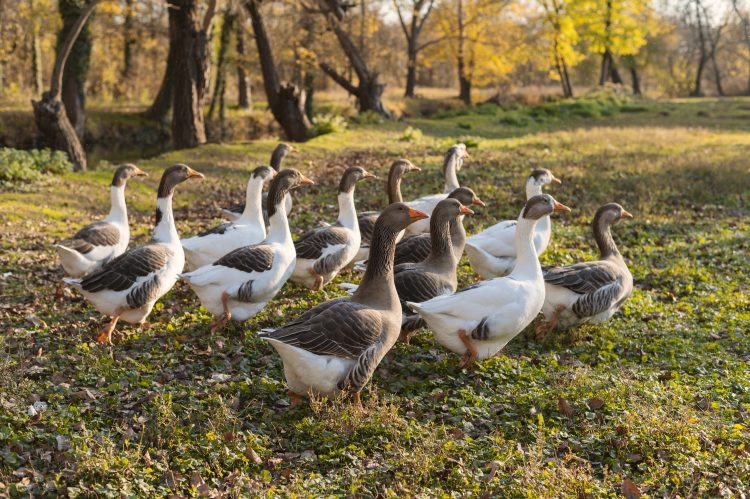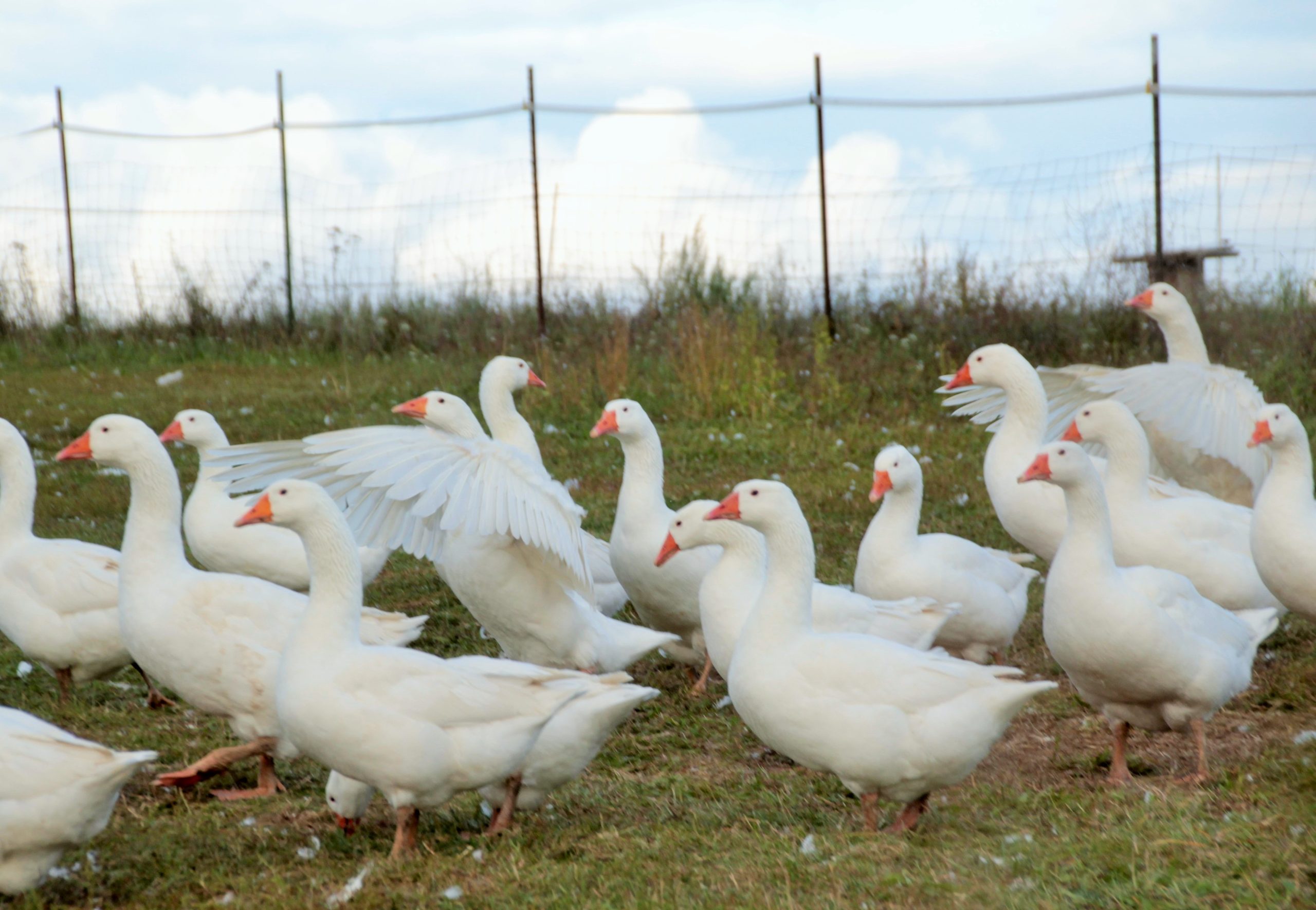Breeding Strategies for Ducks and Geese: A Comprehensive Guide for Farmers
Breeding Strategies for Ducks and Geese: A Comprehensive Guide for Farmers
Ducks and geese are valuable livestock for both small-scale and commercial farmers, providing eggs, meat, down feathers, and natural pest control. Successful breeding is essential for maintaining a healthy, productive flock while ensuring the long-term sustainability of the operation. However, breeding these waterfowl requires careful planning, knowledge of genetics, and optimal husbandry practices.
This comprehensive guide explores effective breeding strategies for ducks and geese, covering breed selection, mating systems, egg incubation, gosling and duckling care, genetic considerations, and common challenges. Whether you’re a beginner or an experienced farmer, this article will equip you with the knowledge to optimize your breeding program.
- Selecting the Right Breeds for Your Breeding Program
The first step in breeding ducks and geese is selecting the right breeds based on your farm’s objectives. Some breeds are better suited for meat production, while others excel in egg-laying or pest control.
- Best Duck Breeds for Breeding
- Pekin Duck – Fast-growing meat breed with high fertility.
- Khaki Campbell – Excellent egg-layer, producing 250–300 eggs per year.
- Indian Runner – High egg production and great for insect control.
- Muscovy – Unique breed known for lean meat and strong brooding instincts.
- Welsh Harlequin – Dual-purpose breed with good egg and meat production.
- Best Goose Breeds for Breeding
- Embden – Large, fast-growing geese ideal for meat production.
- Toulouse – Heavy breed with good fertility and foraging abilities.
- Chinese Goose – Excellent for egg-laying and weeding on farms.
- African Goose – Large size with strong maternal instincts.
- Pilgrim Goose – Auto-sexing breed, making breeding management easier.
Selecting purebred stock from reputable breeders ensures genetic diversity and healthy offspring.
- Breeding Systems: Natural vs. Artificial Breeding
There are two main breeding strategies for ducks and geese: natural breeding and artificial insemination (AI).
- Natural Breeding
Natural mating is the most common method for breeding ducks and geese, requiring a proper male-to-female ratio for fertility optimization.
Recommended Male-to-Female Ratios:
- Ducks: 1 drake (male) per 5–8 ducks.
- Geese: 1 gander (male) per 3–5 geese.
Advantages of Natural Breeding:
✅ Easier to manage for small farms.
✅ Allows birds to exhibit natural mating behaviors.
✅ Lower labor and equipment costs.
Challenges of Natural Breeding:
❌ Some breeds (like Muscovy ducks) may have lower fertility rates.
❌ Over-mating can stress females, requiring separation at times.
❌ Aggressive males can injure females if not monitored.
- Artificial Insemination (AI)
AI is used mainly in commercial duck and goose farms to improve fertility rates and breed efficiency.
Advantages of AI:
✅ Ensures high fertility rates, especially for heavy breeds like Toulouse geese.
✅ Reduces injuries caused by aggressive mating.
✅ Allows for better genetic control and selective breeding.
Challenges of AI:
❌ Requires training and specialized equipment.
❌ Labor-intensive and costly.
❌ Not necessary for most small farms.
For large-scale farms looking to optimize fertility and maintain specific bloodlines, AI can be a useful tool.
- Preparing Ducks and Geese for Breeding Season
- Optimal Breeding Age
- Ducks: Start breeding at 5–7 months (depending on breed).
- Geese: Begin breeding at 8–10 months, with peak fertility at 2–4 years.
- Nutrition for Breeding Stock
Proper nutrition is essential to improve fertility, hatchability, and offspring health.
Key Nutrients for Breeding Ducks and Geese:
- Protein: 16–18% in breeder diets for egg production.
- Calcium: Essential for strong eggshells (available in oyster shells or limestone).
- Vitamins A & E: Improves reproductive performance and embryo development.
Providing high-quality feed and access to fresh water ensures strong reproductive health.
- Nesting and Mating Conditions
- Provide Adequate Space: Each breeding pair needs ample room to reduce stress and aggression.
- Offer Nesting Boxes: Ducks and geese prefer secluded areas for laying eggs.
- Ensure Proper Water Access: Water is essential for mating, especially for geese.
- Incubation and Hatching: Managing Fertile Eggs
Once ducks and geese lay fertilized eggs, the next step is incubation, either naturally (using broody females) or artificially (using an incubator).
- Natural Incubation with Broody Hens
Some duck and goose breeds, like Muscovy ducks and Toulouse geese, are excellent natural mothers.
Best Broody Breeds:
- Ducks: Muscovy, Welsh Harlequin
- Geese: Toulouse, African, Pilgrim
Provide a quiet, secluded nest with straw or wood shavings to encourage brooding.
- Artificial Incubation
If natural brooding is unreliable, incubators can ensure high hatch rates.
Incubation Conditions:
| Species | Temperature | Humidity | Duration (Days) |
| Ducks | 99.5°F (37.5°C) | 55–65% | 28 days |
| Muscovy Ducks | 99.5°F (37.5°C) | 55–65% | 35 days |
| Geese | 99.5°F (37.5°C) | 65–75% | 28–35 days |
Regularly turn eggs 3–5 times daily to prevent embryos from sticking to the shell.
- Caring for Ducklings and Goslings
Once hatched, ducklings and goslings need proper care to ensure survival and healthy growth.
- Brooder Setup
- Temperature: 90–95°F for the first week, reducing by 5°F each week.
- Bedding: Use straw or pine shavings (avoid slippery surfaces).
- Feed: Start with a high-protein (20–22%) starter crumble.
- Water: Provide shallow dishes to prevent drowning.
- Growth Stages and Nutrition
- 0–2 Weeks: Keep warm with protein-rich feed.
- 3–6 Weeks: Introduce greens and gradually transition to grower feed.
- 6+ Weeks: Allow supervised outdoor access and transition to adult feed.
- Common Breeding Challenges and How to Overcome Them
- Infertile Eggs
- Solution: Ensure proper male-to-female ratios and provide vitamin-rich diets.
- Poor Hatch Rates
- Solution: Maintain stable incubation temperatures and humidity levels.
- Weak or Deformed Ducklings/Goslings
- Solution: Improve breeding stock genetics and feed high-quality diets.
- Broody Females Abandoning Nests
- Solution: Provide quiet, secure nesting spaces away from disturbances.
- The Importance of Record-Keeping in Breeding Programs
Tracking breeding performance helps improve flock genetics and production over time.
Essential Records to Keep:
✅ Mating pairs and fertility rates
✅ Egg production and hatch rates
✅ Growth rates and health conditions
✅ Parentage and genetic lineage
Maintaining detailed records helps identify strong breeding lines and eliminate weak genetics.
Conclusion
Breeding ducks and geese is a rewarding yet complex process that requires careful planning, proper nutrition, and efficient incubation practices. Whether using natural breeding or artificial incubation, farmers can optimize fertility and hatch rates by selecting the right breeds, providing a well-balanced diet, and maintaining a suitable environment for breeding.
By implementing these strategies, farmers can develop a sustainable and productive flock while enjoying the numerous benefits ducks and geese offer in agriculture.
Previous Article
Beginner’s Guide to Duck and Geese FarmingDucks and Geese Farming
April 8, 2025



























































